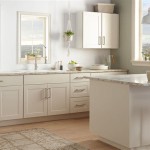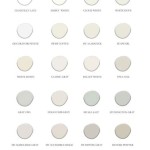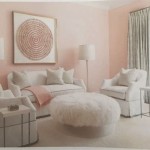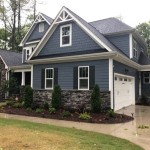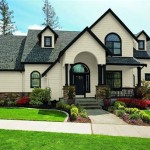Best Warm Gray Paint Colors by Benjamin Moore
Warm gray, often referred to as “greige,” has become a staple in interior design. This versatile color balances the coolness of gray with the warmth of beige, creating a sophisticated and comforting atmosphere. Benjamin Moore, a leading paint manufacturer, offers a wide array of warm gray hues, each with its unique undertones and characteristics. Selecting the perfect warm gray requires careful consideration of lighting, existing décor, and the intended mood of the space.
This article will explore some of the best warm gray paint colors offered by Benjamin Moore, providing insights into their nuances and suggesting optimal applications. Understanding the subtle differences between these colors allows informed decisions when choosing the ideal shade for a specific project.
Understanding Undertones in Warm Gray Paints
The key to successfully implementing a warm gray paint color lies in understanding its undertones. These subtle hints of color, often beige, tan, brown, or even sometimes green, dictate how the paint will appear in different lighting conditions and alongside various materials. Identifying these undertones is crucial for harmonizing the paint with existing elements in a room, such as flooring, furniture, and trim. Neutral grays lack prominent undertones, while warm grays lean towards warmer, earthier hues.
Natural and artificial light significantly impact how a paint color is perceived. In north-facing rooms with cooler, indirect light, warm grays can prevent the space from feeling cold or sterile. Conversely, in south-facing rooms with abundant warm sunlight, the warmth of the gray may be intensified, potentially shifting the color towards beige or brown. It's essential to test paint samples in the specific room and lighting conditions before committing to a large-scale application. Observing the color at different times of the day will reveal how the undertones shift under varying light sources.
Considering the existing décor is equally important. The colors and materials already present in the space will influence how the warm gray paint appears. For example, if a room features warm wood tones, a warm gray with beige or brown undertones will likely complement it well. If the room has cooler elements like stainless steel or cool-toned countertops, a warm gray with subtle green undertones might create a more balanced effect. Ultimately, the goal is to create a cohesive and harmonious color palette throughout the space.
Top Benjamin Moore Warm Gray Paint Colors
Benjamin Moore offers a diverse selection of warm gray paint colors, each with its own unique character. Some of the most popular and versatile choices include:
Revere Pewter HC-172: Revere Pewter is arguably one of Benjamin Moore's most beloved warm grays. It's a classic, light-to-mid-tone hue with subtle beige undertones. Its versatility allows it to work well in various spaces, from living rooms and bedrooms to kitchens and bathrooms. Revere Pewter is known for its ability to create a comfortable and inviting atmosphere without appearing overly beige or brown. It pairs well with white trim, natural wood elements, and a variety of accent colors.
Balboa Mist OC-27: Balboa Mist is a lighter, airier warm gray with delicate beige undertones. It's an excellent choice for creating a serene and calming environment. Balboa Mist is frequently used in bedrooms, nurseries, and bathrooms due to its soft and gentle appearance. Its light reflectance value (LRV) is relatively high, making it suitable for rooms with limited natural light. It coordinates beautifully with crisp white trim, pastel accents, and soft, textured fabrics.
Edgecomb Gray HC-173: Edgecomb Gray is another highly popular warm gray known for its balanced undertones. It sits comfortably between Revere Pewter and Balboa Mist in terms of depth and color intensity. Edgecomb Gray offers a slightly more substantial presence than Balboa Mist but remains lighter and more neutral than Revere Pewter. It's a reliable choice for large spaces, such as open-concept living areas, because it provides a warm and unifying backdrop. It complements both warm and cool tones, making it a versatile foundation for various design styles.
Manchester Tan HC-81: While technically a tan, Manchester Tan leans heavily towards gray, especially in certain lighting conditions. It's a sophisticated and timeless color that exudes warmth and elegance. Manchester Tan works particularly well in formal spaces, such as dining rooms and libraries, but can also be used to create a cozy and inviting atmosphere in living rooms and bedrooms. It pairs well with rich wood tones, elegant fabrics, and metallic accents.
Pale Oak OC-20: Pale Oak is a very light and airy warm gray with subtle green undertones. These green undertones are not immediately apparent but contribute to its overall softness and complexity. Pale Oak is an excellent choice for creating a natural and organic feel in a space. It works well in rooms with abundant natural light and is particularly well-suited for coastal or nature-inspired design schemes. It complements natural wood, greenery, and other earthy tones.
Grant Beige HC-83: Grant Beige is a mid-tone warm gray with more pronounced beige undertones. It offers a greater degree of warmth and richness compared to lighter warm grays like Balboa Mist and Pale Oak. Grant Beige is a good choice for those who want a warm gray that leans slightly more towards beige. It works well in spaces with traditional or transitional decor and pairs well with warm wood tones, leather furniture, and antique accents.
Factors to Consider When Choosing a Warm Gray
Several factors should be taken into account when selecting the ideal Benjamin Moore warm gray paint color. It is not simply about choosing one of the recommended colors; it's about making an informed decision based on a specific scenario. These consideration parameters will significantly affect the final visual impact.
Room Size and Layout: The size and layout of the room play a crucial role in determining which warm gray will work best. In smaller rooms, lighter warm grays like Balboa Mist or Pale Oak can help to create a sense of spaciousness and airiness. Darker warm grays like Grant Beige may make a room feel smaller and more intimate. In larger rooms, mid-tone warm grays like Revere Pewter or Edgecomb Gray can provide a grounding presence without overwhelming the space. The layout of the room also matters. Rooms with high ceilings can often handle darker colors than rooms with low ceilings.
Existing Architectural Details: The existing architectural details of a room can influence the choice of warm gray. For example, if a room has intricate trim work, a lighter warm gray can highlight the architectural details without creating too much contrast. If a room has simpler architectural details, a mid-tone or darker warm gray can add depth and visual interest. Consider the color and material of the flooring, trim, and any built-in features when selecting a warm gray paint color.
Desired Mood and Atmosphere: The desired mood and atmosphere of the space should also be considered. Lighter warm grays tend to create a more calming and serene environment, while darker warm grays can create a more dramatic and intimate atmosphere. Think about how the room will be used and the feeling that is intended to evoke. For example, a bedroom might benefit from a soft and relaxing warm gray, while a dining room might benefit from a more sophisticated and elegant warm gray.
Testing Paint Samples: The most crucial step in choosing a warm gray paint color is to test samples in the actual room. Paint a large sample area on the wall and observe it at different times of the day and under different lighting conditions. Consider purchasing small sample cans of several different warm gray paint colors and comparing them side-by-side. This allows to see how the colors interact with the existing elements in the room and how the undertones shift under varying light sources. Seeing the paint in person is invaluable for making an informed decision.
By carefully considering these factors and testing paint samples, the optimal Benjamin Moore warm gray paint color can be selected, transforming the space into a stylish and inviting environment.

The Best Warm Gray Paint Colors Life On Virginia Street

The Best Warm Gray Paint Colors Designers Love Laurel Home

The 9 Best Benjamin Moore Paint Colors Light Dark Grays Incl Undertones Kylie M Interiors

18 Of The Best Benjamin Moore Gray Paint Colors

The Best Gray Paint Colors Life On Virginia Street

Pin On Benjamin Moore Gray Greige Best Colors

Grays Color Families Benjamin Moore

Benjamin Moore Paint Colours Top Grays

Best Gray Paint Colours By Benjamin Moore Claire Jefford

Top Gray Paints Warm Neutral And Cool Monk Nun
Related Posts


